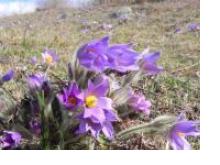Jersey tiger (Euplagia quadripunctaria)
 
Priority species: YES
Subject of protection in project sites: Bl┼íansk├Ż chlum
Other sites with the species occurrence: P├ínov. Jersey tiger is the subject of protection in SAC Hodon├şnsk├í doubrava, of which P├ínov is a part. However, its occurrence is marginal on the actual training ground; it is typical for light oak forests.
Ecological demands:
It lives in mesophilic light forests at lower and middle levels, shrubby edges, forest clearings, etc. with rich herbal undergrowth. In some areas, including ─îesk├ę st┼Öedoho┼Ö├ş (Central Bohemian Uplands), it has adapted to xerothermic conditions. Adult individuals fly in July and August and are active during the day as well as at night. They like to suck on flowers of nectar plants (hemp-agrimony, thistles, etc.). The caterpillars are polyphagous; they live mainly on dead-nettles (Lamium), willow herbs (Epilobium), forget-me-nots (Myosotis), comfreys (Symphitum), nettles (Urtica), etc. The development of larvae lasts from August to June of the following year; third-instar caterpillars hibernate.
Population size and status in the Czech Republic:
In the Czech Republic, the Jersey tiger is spread over warm areas of Bohemia and Moravia. In Bohemia, it is mainly ─îesk├ę st┼Öedoho┼Ö├ş and ─îesk├Ż kras (Bohemian Karst), which are core areas of local occurrence. Apart from these places, the species inhabits gorges of lower streams of the Vltava, Berounka, and S├ízava rivers, and an isolated area of occurrence is in South Bohemia around ─îesk├Ż Krumlov. In Moravia, Jersey tiger is widespread in the lowlands of South Moravia, and from here, along the Morava, Be?va, and Odra rivers, through Central Moravia, reaching as far as the Moravian-Silesian Region. It also occurs in South-West Moravia from Podyj├ş in north-east direction up to the foothills of ─îeskomoravsk├í vyso─Źina (Bohemian-Moravian Highlands) and also in B├şl├ę Karpaty (White Carpathians). The status and trend of the populations are considered good and stable to moderately increasing. This applies in particular to the core areas of species occurrence. In marginal parts of the area on isolated sites, the populations may be threatened by changes in habitat structure and use.
 
Photo: Marek Vojt├ş┼íek, http://motyli.kolas.cz/
 








